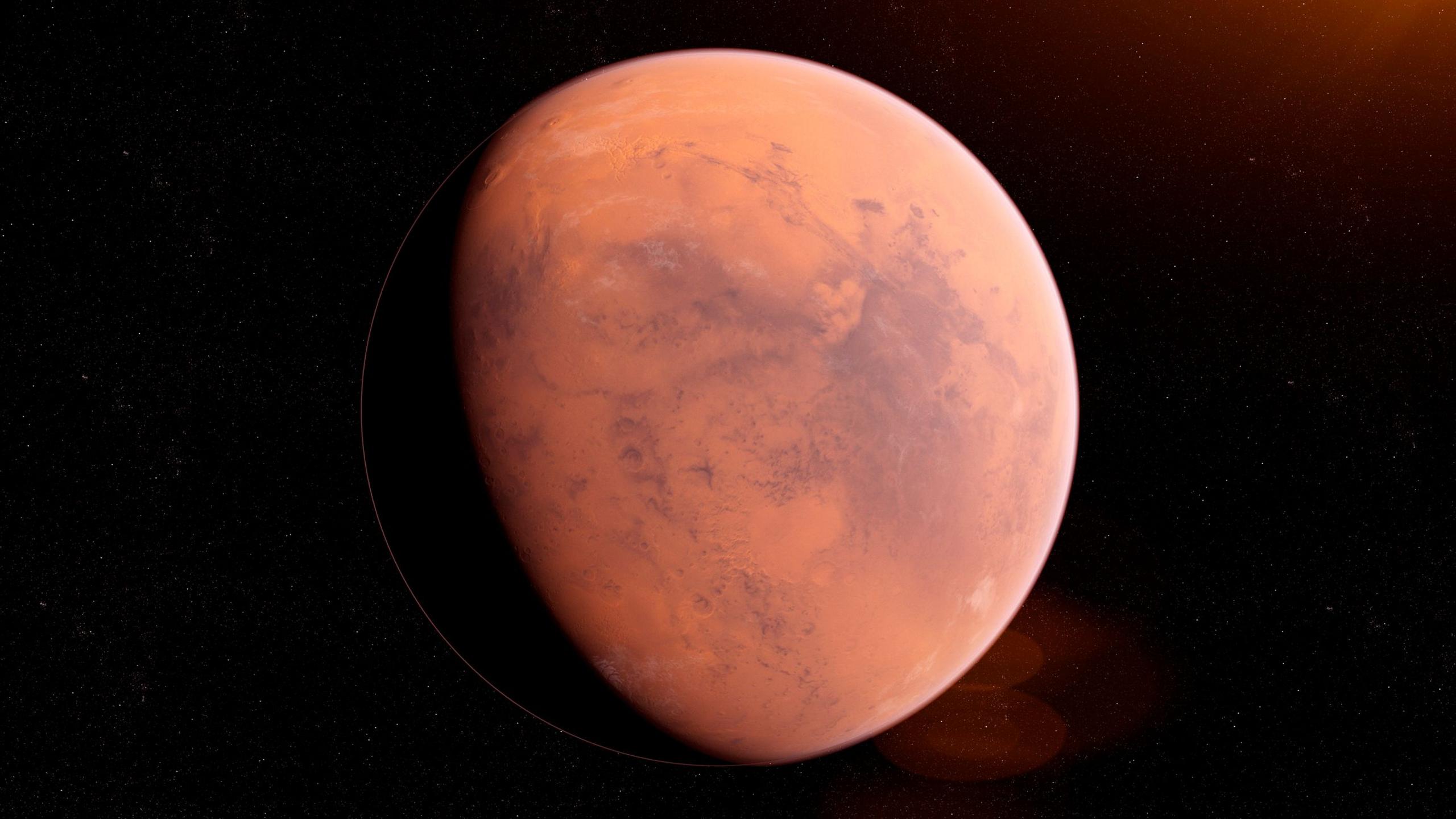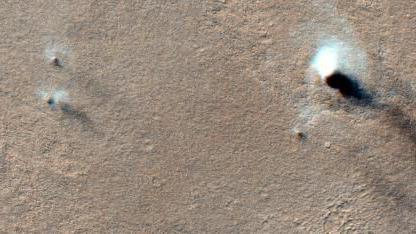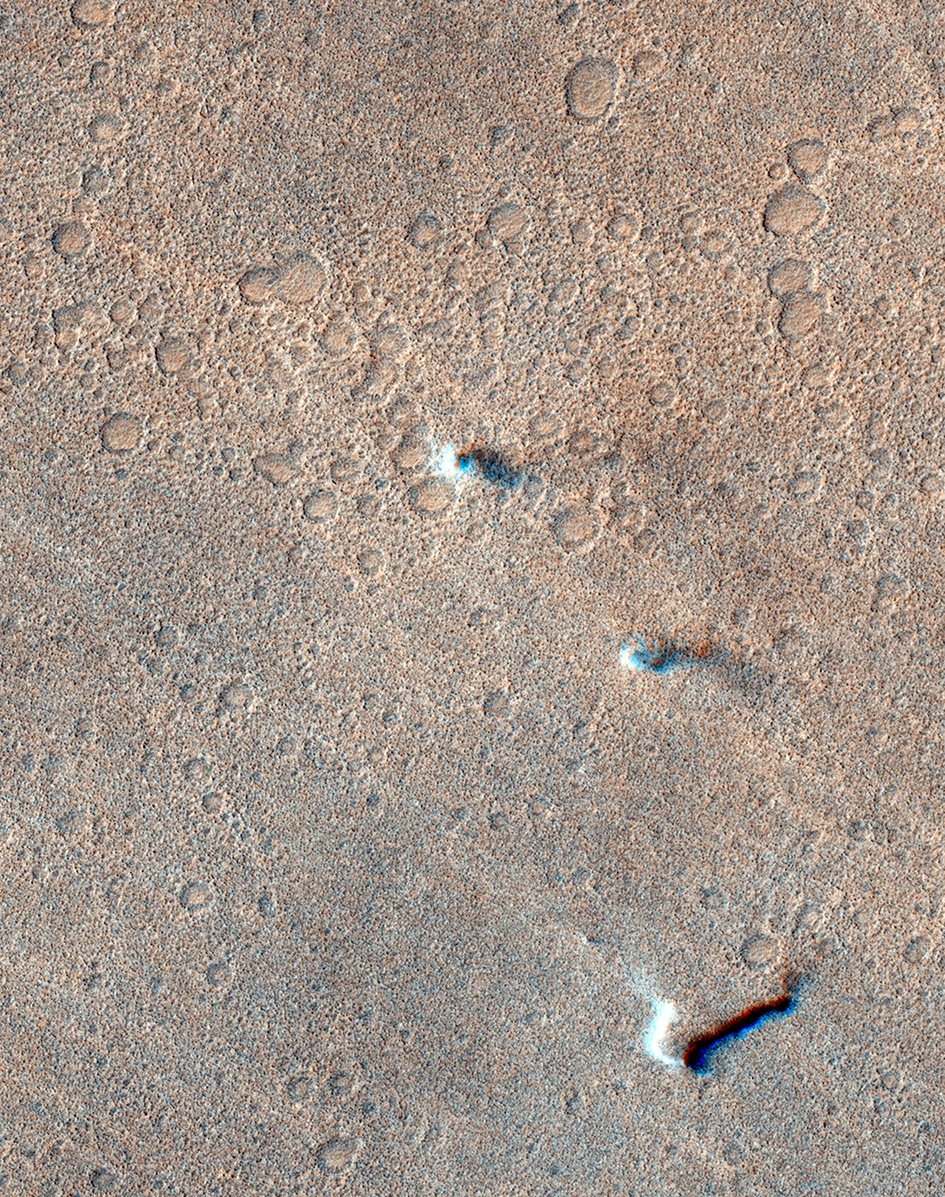Winds on Mars reach speeds of 100mph

- Published
A new study has found that winds and whirling 'dust devils' on Mars can reach much higher speeds than previously thought.
The study from the University of Bern in Switzerland, uses two years worth of images from two spacecraft that have been circling Mars.
Dust devils are small whirlwinds that form from the ground but in the dry climate of Mars, the dust devils last a lot longer.
Researchers say this is the first time the direction and speed of the dust devils, and the wind surrounding them, have been tracked.
Nasa reveals new astronauts for Moon and Mars missions
- Published23 September
Could these rocks show there was once life on Mars?
- Published10 September
How did Mars become the Red Planet?
- Published25 February

Dust devils on Mars
The new study led by Dr. Valentin Bickel from the Centre for Space and Habitability at the University of Bern looked at images from cameras on board two orbiters: European Space Agency's (ESA) ExoMars Trace Gas Orbiter and ESA orbiter Mars Express.
The team looked at images for around 300 of the identified dust devils in order to measure their directions of movement and speed.
The results, published in the journal Science Advances, show that the dust devils and the wins surrounding them can reach speeds of about 100 miles per hour across the entire planet, which is much more than previously thought.
The high wind speed affects the amount of dust produced.
"These strong, straight-line winds are very likely to bring a considerable amount of dust into the Martian atmosphere – much more than previously assumed," says Bickel.

Three dust devils tracking across the Martian surface, captured by a camera on board the European Space Agency ExoMars Trace Gas Orbiter
The study authors say the findings will help with assessing risks for future missions to Mars.
"A better understanding of the wind conditions on Mars is crucial for the planning and execution of future landed missions," explains Daniela Tirsch from the Institute of Space Research at the German Aerospace Centre (DLR) and co-author of the study.
